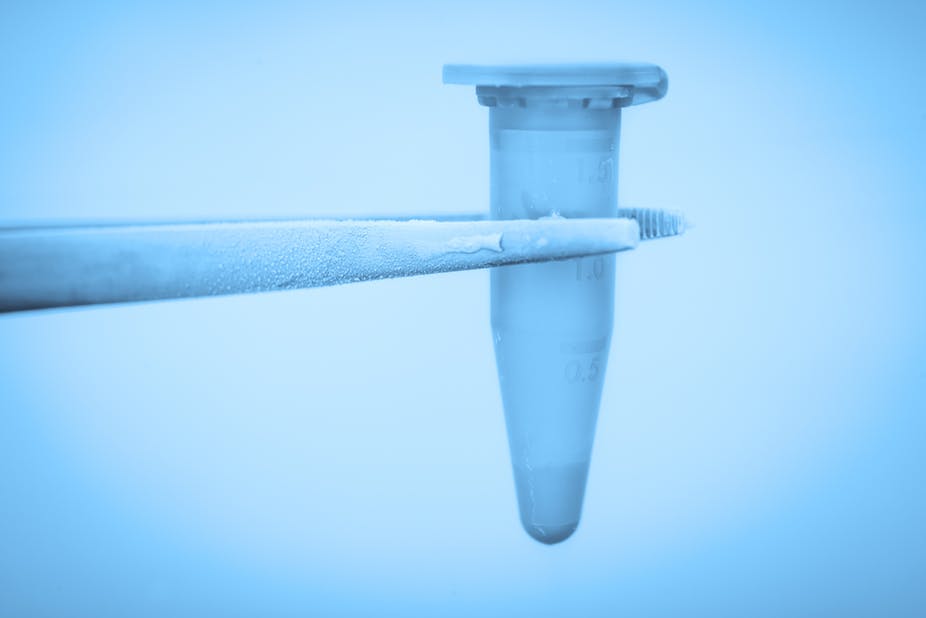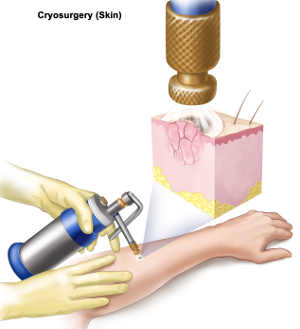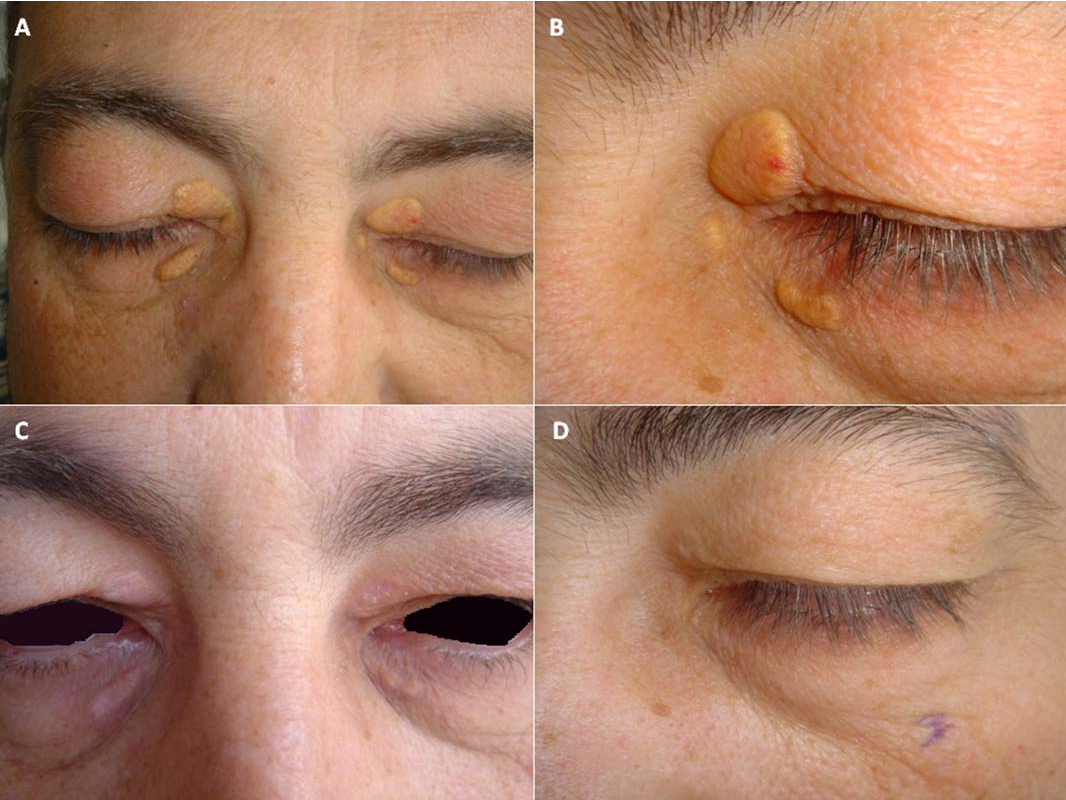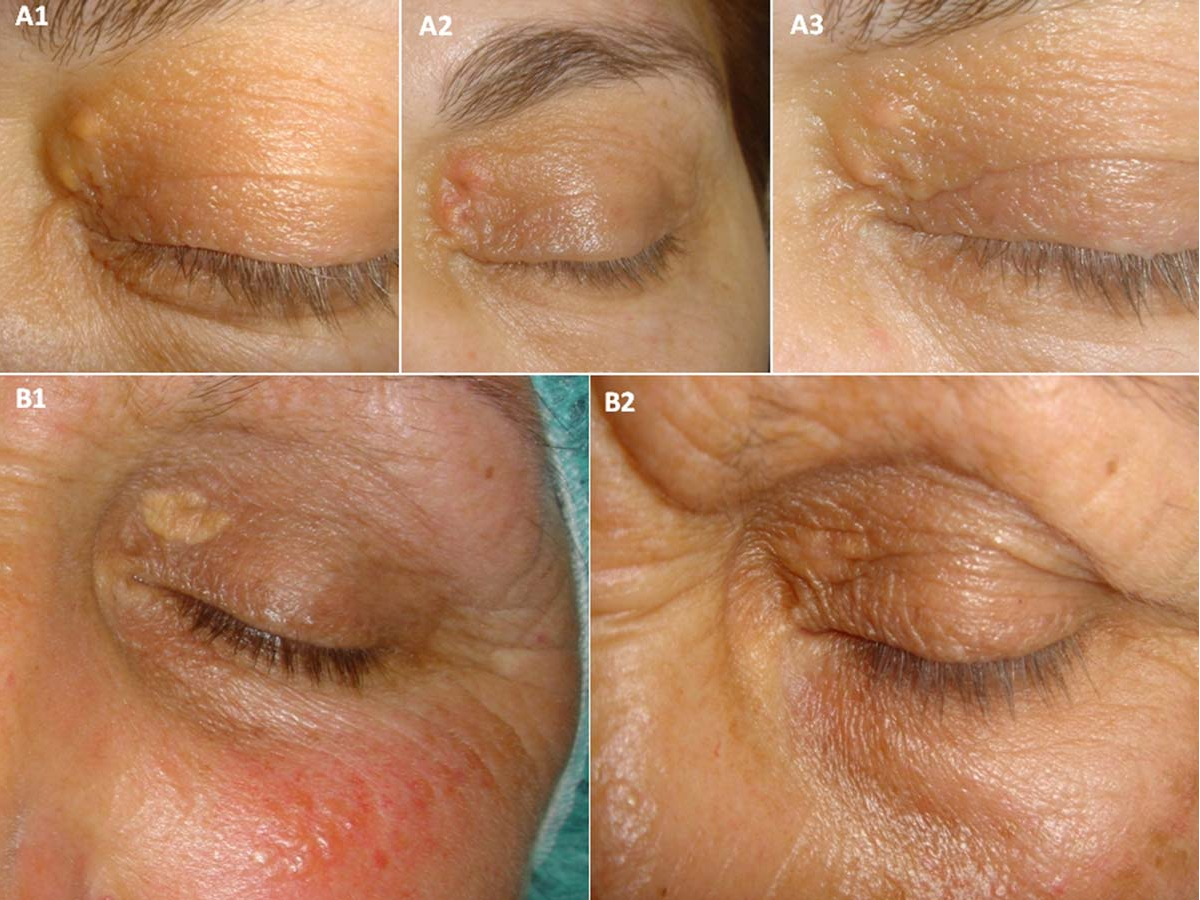Xanthelasma Removal by Freezing
This removal treatment involves freezing the xanthelasma with liquid nitrogen or another chemical. Which is also known as Cryotherapy. The fluid nitrogen treatment has been proposed as a possible xanthelasma removal treatment for freezing. Liquid nitrogen xanthelasma treatment is refferred to as Cryo-Xanthelasma-ablation, and you will see this option come up from time to time. However the dangers of applying extreme low temperatures to your eyelids and the disappointing results have made this removal treatment the least favoured – it is simply too dangerous, destructive and the results are unreliable.

What is Cryo-ablation?
Cryo-ablation is the use of extreme cold in order to destroy abnormal or diseased tissue and cells. In this treatment, the liquid nitrogen is applied to the skin in order to break the cell walls. The liquid nitrogen also causes damage to the micro-vascular circulation, which results in secondary anoxia and hemorrhagic necrosis. Ideally, this will damage and kill the offending cells and solve the problem.
Cryo-ablation is similar to acute frostbite. Due to its intense delivery and dramatic results, this form of skin treatment is the best for large areas of skin, and can be of beneficial for wrinkle control and skin resurfacing. As a treatment option for Xanthelasma, it is far more dangerous and the negatives greatly outweigh the positives. For these reasons it has been recently widely discarded.

Disadvantges of freezing (Cryo-ablation) treatment
- The application of liquid nitrogen does sting. Although it’s cold, many describe the procedure as a feeling of “burning”
- Cryo_ablation can cause treatment sites to appear permanently lighter in color (hypopigmantation). Extra caution must be used when treating the face or any other cosmetically sensitive area.
- It’s only appropriate to remove skin lesions on parts of the body that are not as delicate like the eyelid area. In other words, it’s generally effective for the treatment of fully developed skin cancers or “deep” lesions such as large moles which grow on other parts of the body away from the eyelid area.
- Depending on how it is applied and the location of the treatment site, blisters will sometimes form in the days following treatment (more common on the eyelids).


What is liquid nitrogen regularly used for?
The liquid nitrogen, due to its low reactivity and low temperature, is used for various uses. Some of its applications include:
- Cryotherapy when removing cancer and benign skin lesions. Skin therapies is only one of them.
- Freezing and transportation of food products.
- Cryopreservation of biological samples like eggs, sperm, and animal genetic samples.
- Coolant for computers, vacuum pumps, and other equipment.
- Preventing of materials from oxygen exposure.
- Quick freezing of water or pipes to make working on them easy when valves aren’t available.
- As a source of very dry nitrogen gas.
- For branding cattle.
- Cooling materials to enable easier machining or fracturing.
- Science projects like freezing of flowers, liquid nitrogen ice cream, and then watching them shatter when tapped onto a hard surface to make nitrogen fog.

Is Liquid Nitrogen a good treatment for Xanthelasma?
In Simple and Short Words, “NO” It is not effective or Good treatment.’ Cryo-ablation destroys all of the cells that’s it
Cryo-ablation destroys all of the cells that it comes into contact with. The resulting injury will be worse than the original problem. In the case of liquid nitrogen and Xanthelasma, the Cryo-ablation technique can penetrate right through the eyelid, and can cause painful and dangerous freeze burns on the eyeball. Do not risk your vision – this is a risky treatment option.
